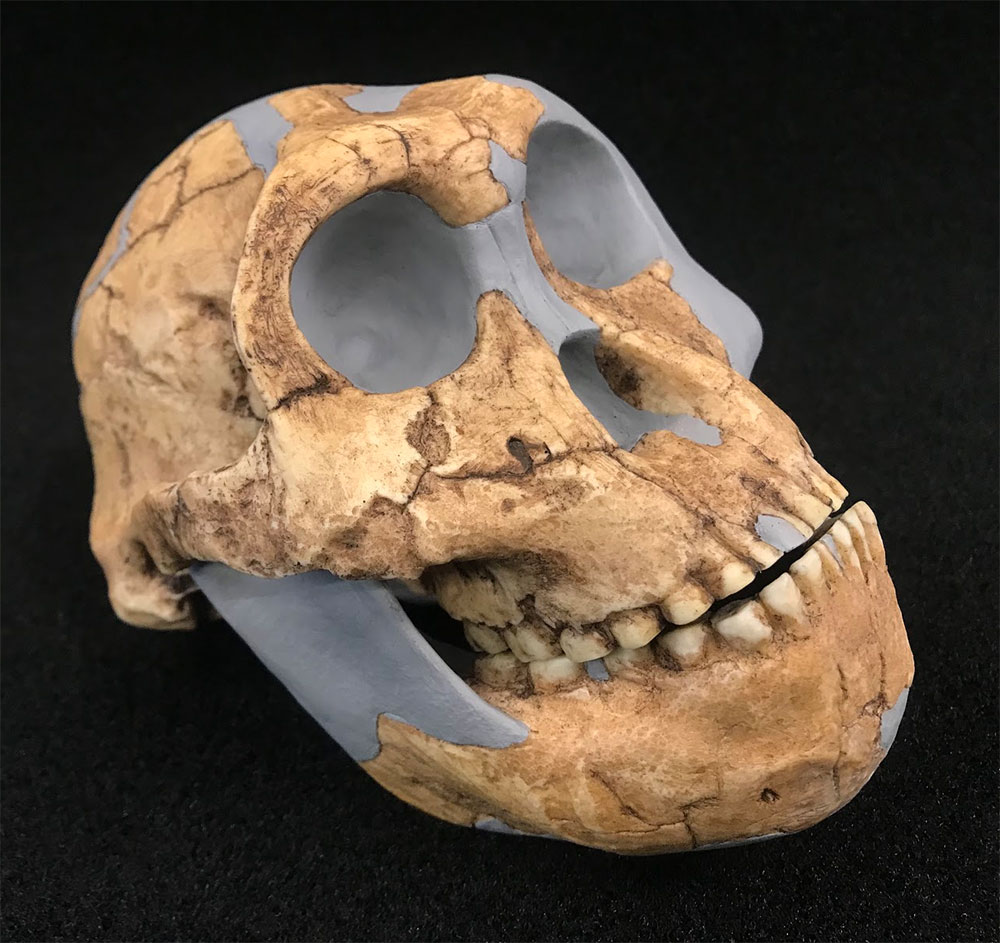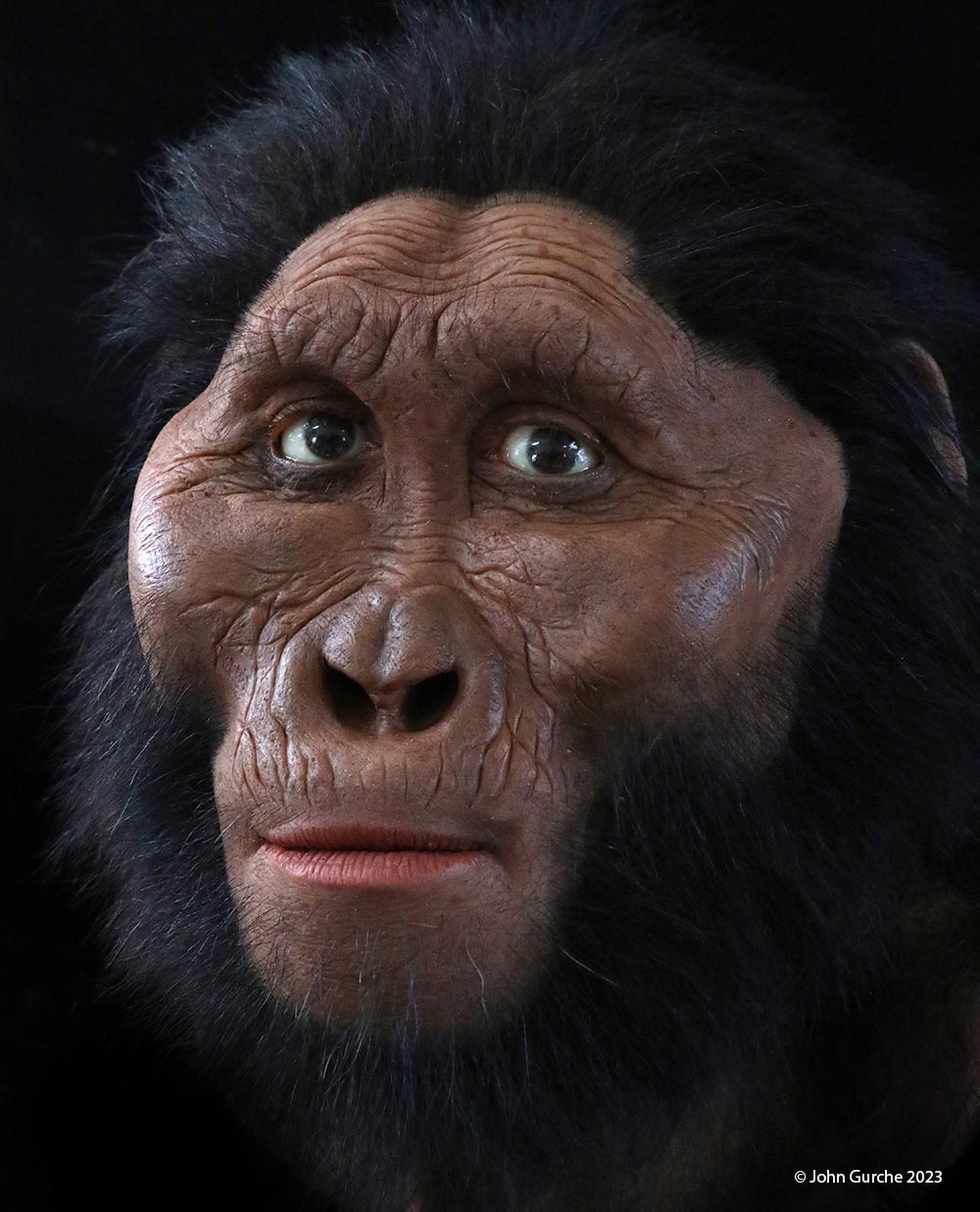Paranthropus robustus
Skull DNH 7 - 2-1.5 Million Years Ago


DNH 7 was discovered by A. Keyser's team in 1994 at the Drimolen site in South Africa. The species name robustus, Latin for ‘strongly built’, refers to its large, thick skull and jaw bones. One of the most complete early hominin skulls found from this time period, this skull is also the first from a single individual of the Paranthropus sp. (robust australopithecines) and is presumed to be female. Distortion present in the original fossil has been corrected under strict scientific supervision. The ancestry of P. robustus is debated, some suggesting it evolved from P. aethiopicus while others hypothesizing it evolved from A. africanus. In fact, the genus Paranthropus itself may not be monophyletic (i.e. a valid grouping of a common ancestor and its descendants) but may well represent a paraphyletic group of similar-looking hominins. Regardless, none are considered in the direct line to modern humans due to the time period in which they lived and their robust chewing features compared to Homo species.
Read more Australian Museum's Paranthopus robustus
- Hominin Skulls - Select a Species
- Ardipithecus kadabba
- Ardipithecus ramidus
- Australopithecus afarensis
- Australopithecus africanus
- Australopithecus anamensis
- Australopithecus garhi
- Australopithecus sediba
- Denisovans
- Homo antecessor
- Homo erectus
- Homo floresiensis
- Homo habilis
- Homo heidelbergensis
- Homo naledi
- Homo neanderthalensis
- Homo rudolfensis
- Homo sapiens
- Kenyanthropus platyops
- Ororrin tugenensis
- Paranthropus aethiopicus
- Paranthropus boisei
- Paranthropus robustus
- Sahelanthropus tchadensis

